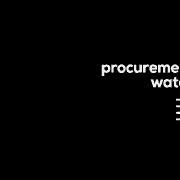|
Getting your Trinity Audio player ready...
|
- NOTE (12 November 2021): In October 2021, Corruption Watch (C) released its first Procurement Watch Report on Procurement Risk Trends. It reported on trends emerging from data published by National Treasury on various aspects of public procurement, notably deviations from procurement procedures, contract variations and restrictions of suppliers. The report has now been updated and version 2 is published here. This version contains updated data since the first report. Most notably, following the release of the first report, it has emerged that some of the data published in National Treasury’s quarterly reports is incorrect. A notable example is the contract variation reported in the 2018/2019 Quarter 3 report which indicated a contract variation by the ECIC of R157 638 540 on an original contract value of R53 475. Following submissions made by the ECIC to CW, it has emerged that this reporting is incorrect. The correct variation was in the amount of R157 638.54 from a contract value of R53 475 to R211 113.54 (294.7% increase). CW has accordingly also corrected this in the report, and this release has been updated as well. This exchange illustrates the utility of the Procurement Watch tool to interrogate data as published.
Today Corruption Watch (CW) released its first report that analyses procurement information drawn from National Treasury (NT) data captured between 2016 and 2021. The analysis was made possible by CW’s new online tool, Procurement Watch, which aggregates data from the individually published reports.
The focus of the report is on trends regarding deviations and expansion of contracts, along with analysis of restricted suppliers. These areas can potentially raise red flags, indicating a lack of planning for procurement requirements or unexpected changes to the procurement process.
“While data on deviations from prescribed procurement procedures and variations of concluded contracts have been publicly available for some time, the way in which this information has been published made it very difficult to do any meaningful analysis and track trends,” procurement law expert Prof Geo Quinot, the report’s author, commented. “Corruption Watch’s new tool, Procurement Watch, greatly facilitates such analysis. As the first report shows, it allows one to take a much closer look at what is happening in this area and to dig deeper to distinguish between bona fide exceptional circumstances and malfeasance in procurement.”
Deviations and contract expansions are accepted mechanisms within the procurement system and do not necessarily indicate irregularities. It is therefore important to consider each case on its own merits when conducting data analysis to determine whether there is any evidence of abuse of the system. Similarly, where bidders have been restricted from conducting business with the state, known as debarment, there may be reasons that relate to performance failure, and not just to abuse of the procurement system.
The report also covers the rules governing public procurement, providing an overview of statutory prescripts for public procurement, with specific attention to deviations from normal procurement and expansion of contracts.
Deviations and expansions
The data relating to deviations between 2016 and 2021 show an increase in 2018 in deviations unsupported by NT, but a tailing off in numbers in 2020 due to emergency rules governing procurement under Covid-19 restrictions. Of the 10 largest reported deviations during the period, South African Airways tops the list with request for funding from various suppliers in 2017, followed by Eskom’s renegotiated coal supply agreements in 2020, both of which were unsupported by NT. Further down on the list is the Passenger Rail Agency of South Africa, in relation to the appointment of the Development Bank of South Africa as an implementing agent, also unsupported. It is also interesting to note that the Department of Higher Education and Training features in the top 10 in relation to procurement of laptops for students.
The report highlights contract expansions reported to the NT between 2017 and 2021, showing a consistent reduction in the number of reported contract expansions year-on-year since 2017. It is worth noting, when reviewing the 10 largest reported contract expansions reported to NT, the massive scope of the expansions.
Topping the list of contract expansions is the Department of Basic Education, relating to its request for an extension for professional services fees on its Accelerated Schools Infrastructure Development Initiative projects, representing an unsupported 26 815% increase. Also unsupported was Eskom’s request for an extension on its 400 MV Switchgear project, citing the reason that funds were exhausted.
Restricted suppliers
In relation to the two restricted suppliers lists, the Register for Tender Defaulters and the Database of Restricted Suppliers, there are currently listings only on the latter. A range of state entities have submitted the names of suppliers for inclusion on the restricted supplier database, all of which are currently still restricted.
The City of Cape Town has submitted the highest number, with 54 suppliers identified, followed by the Department of Local Government and Housing in Limpopo with 42. The numbers then fall significantly, with the Western Cape Department of Health indicating 20 suppliers, and the Gauteng Department of Roads and Transport with 14. The reasons for restricting suppliers range from poor or non-performance and submission of fraudulent tax clearance certificates, to misrepresentation of information, and fraud and conflict of interest, to name a few.
The number of entities submitting names is particularly small (32), considering that there are around 40 national departments, 103 provincial departments, 278 municipalities, nine constitutional institutions and 154 other public entities listed in schedule 3 of the Public Finance Management Act.
“This report is significant as an example of the type of data to be drawn from our new Procurement Watch tool, in order to assist in identifying patterns and trends in public procurement practice in South Africa,” said Karam Singh, head of legal and investigations at CW. “Notably, it shines a light on the high-risk areas of deviations from normal procurement procedures, as well as variations of contracts during the implementation phase. We are, with increasing focus, taking seriously the role of civil society in pushing for greater transparency in procurement processes, as clearly this area remains one of the country’s greater corruption risks,” he concluded.
Download the Procurement Watch report.
For media queries, please contact:
Phemelo Khaas: 083 763 3472 phemelok@corruptionwatch.org.za







